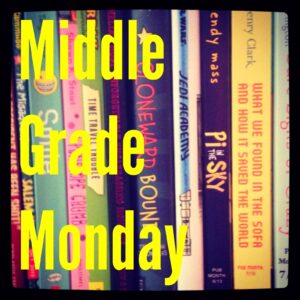Middle Grade Monday – Booooooolean Searching
I’ve been working with my sixth grade students on Boolean searching. It’s not as difficult as it sounds. Well, not once we get past the giggles that the name ‘Boolean’ elicits from them. Maybe I chose to do this too close to Halloween? In any case, it’s a dual purpose effort. Firstly I want them to understand how to use the online catalog search more effectively. Many of them have come from situations in elementary school where they were never taught how to use the catalog search beyond looking up a subject, author, or keyword to find what they wanted. Some of them come from elementary schools where the “Destiny Quest” interface was the only search used. While it is visually more appealing to younger students, it limits them to keyword search. Secondly, I will die happy if I ever see one of them search the Internet with something other than a complete question. Alright, I suppose I’m exaggerating a little, but it can be quite frustrating to watch.
So, what does it take to teach your average group of eleven-year-old students the basics behind Boolean searching? Venn diagrams and some concerted silliness. Each table of students gets a simple Venn diagram to use as reference, and I have large printed cards with the words AND, OR, and NOT printed on them. We start with the group working together to decide which section of their Venn diagram I’m searching for, and they point as a group – “red NOT blue,” etc. We also sometimes do this with the Smartboard. Members of my ‘studio audience’ are invited up to shade the correct portion of the Venn diagram on the Smartboard. This can be extremely helpful when you have a ‘ringleader’ type in the group. If you can get that student on board with the silliness, most will follow.
ADVERTISEMENT
ADVERTISEMENT
The next portion of the lesson is probably my students’ favorite. Who doesn’t love a fast round of stand up/sit down? I try to pick unambiguous signifiers, although there is usually someone in the group who gets confused. So, for instance, “If you are wearing jeans AND have shoe laces in your shoes, stand up.” Then we count off how many are standing. Next, “If you are wearing jeans and do NOT have laces in your shoes, stand up.” You get the idea. The students do, too. We have a discussion of who never got to stand up, who always got to stand up, which group was the biggest, which was the smallest, and what that tells us about how AND, OR, and NOT work.
Next, we move on to working with the advanced search function of the online catalog. I take suggestions from my ‘studio audience’ and we together try to predict what sort of results we will get. It can get pretty wacky. Finally, I free the students to go search for their own book. Every computer in the library is logged in to the online catalog. If they can bring me a book they want to check out and explain how they used the advanced search function to find it, they get a sticker. It’s still a powerful motivator with your average eleven-year-old.
Target has some amazing booklets of the most garish Lisa Frank stickers imaginable for just $1, by the way.
Filed under: Middle Grade Monday, Uncategorized
About Robin Willis
After working in middle school libraries for over 20 years, Robin Willis now works in a public library system in Maryland.
ADVERTISEMENT
ADVERTISEMENT
SLJ Blog Network
2024 Books from Pura Belpré Winners
In Memorium: The Great Étienne Delessert Passes Away
Winnie-The-Pooh | Review
Parsing Religion in Public Schools
ADVERTISEMENT









What a great lesson! Thanks for sharing!